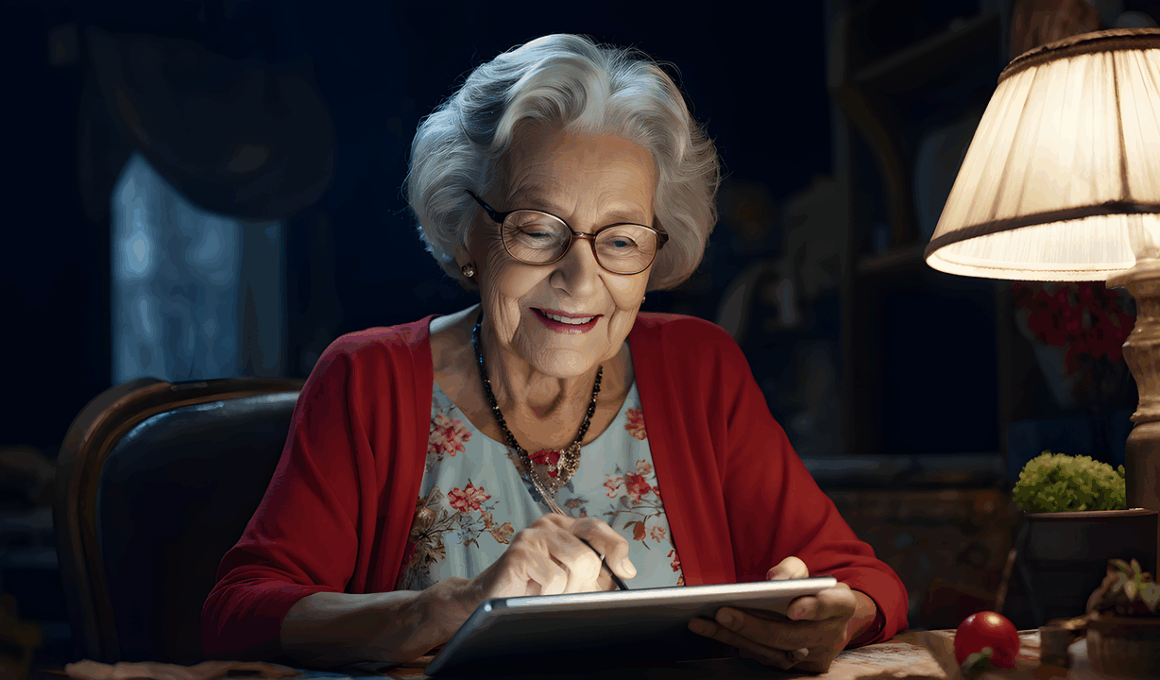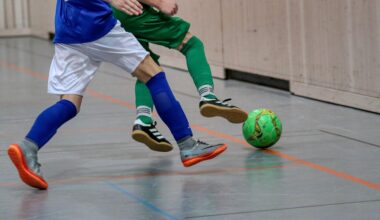Using Technology to Track and Promote Hydration in Seniors
Maintaining proper hydration is essential for elderly populations, as they are particularly vulnerable to dehydration. Dehydration can lead to severe health complications, including kidney problems, confusion, and falls. It is crucial to implement effective strategies that ensure seniors consume adequate fluids throughout the day. Innovative technologies are now available to help monitor and promote hydration among elderly individuals. Mobile applications, smart water bottles, and wearable devices can play a pivotal role. These technologies can send timely reminders to fall short of hydration goals, providing essential assistance. Moreover, some devices can track daily fluid intake and overtime patterns, allowing caregivers to adjust hydration strategies accordingly. This proactive approach to hydration management addresses the unique challenges seniors face, thus enhancing their overall well-being. Regular hydration checks should be integrated into routine health assessments to ensure ongoing monitoring. Education on the importance of fluid intake is also fundamental for both seniors and their caregivers. With these advancements, the goal of preventing dehydration can be achieved effectively.
Promoting hydration among seniors often involves understanding their unique preferences and needs. This demographic may have various health conditions and medications that affect fluid balance and requirements. Utilizing technology allows for customizable strategies tailored to individual seniors. For instance, applications can create personalized hydration plans based on health data, ensuring that fluid intake adequately meets specific needs. Additionally, it is important to consider the taste and variety of the fluids consumed. Engaging seniors in hydration strategies can make them more appealing. Options such as flavored water or herbal teas can be included to diversify their choices. Moreover, technology can track preferences, enabling caregivers to offer personalized recommendations and enhancements continually. Some smart devices can even incorporate gamification techniques, turning hydration into a fun and engaging activity. With friendly reminders and interactive features, seniors may feel motivated to drink more water throughout the day. Collaboratively, seniors, caregivers, and technology can foster a supportive environment to enhance hydration and promote a healthier lifestyle. Empowering seniors with knowledge and tools elevates their ability to take control of their hydration.
The Role of Caregivers in Hydration Strategies
Caregivers play a vital role in ensuring that seniors remain hydrated. They are often responsible for monitoring fluid intake and encouraging regular water consumption. With the integration of technology, caregivers have access to valuable resources that facilitate this process. For example, hydration-tracking apps can allow caregivers to log and analyze the fluid intake of seniors in their care. This assists caregivers in identifying patterns and making informed decisions regarding hydration strategies. Communication among caregivers and healthcare providers must also occur to ensure a seamless approach. Device notifications can alert caregivers when specific hydration goals are not met, prompting immediate action. Furthermore, caregivers can utilize tech features to set reminders for seniors to drink water, reinforcing the habit. Additionally, building a trusting relationship is essential for seniors to be receptive to these reminders. Caregivers must create a positive experience around hydration, making it enjoyable rather than a chore. Implementing solutions that embody creativity and fun can significantly improve engagement levels among the elderly. Simplifying these processes through technology ultimately leads to better health outcomes over time.
Mobile apps designed for hydration tracking have gained popularity in recent years, offering unique features tailored to the needs of seniors. These applications often come with user-friendly interfaces that make monitoring fluid intake straightforward. They can serve as daily logs, allowing seniors to report their fluid consumption efficiently. Many apps provide customizable settings that enable notifications, reminders, and even motivational messages that inspire regular drinking habits. Furthermore, some apps allow integration with other health monitoring devices, providing a comprehensive view of seniors’ health. This data not only helps manage fluid intake but can also indicate trends over time, alerting caregivers and health professionals to potential concerns. Data visualization tools can present hydration levels in an easy-to-understand format, enhancing decision-making for both seniors and caregivers. Additionally, some mobile applications incorporate social-sharing features, enabling seniors to share progress with friends or family to feel supported. This sense of community can further motivate them to maintain proper hydration practices. Overall, employing these technologies ensures a holistic and focused approach to hydration in elderly populations.
Smart Water Bottles: A Practical Solution
Smart water bottles represent a practical solution in promoting hydration among seniors. Equipped with advanced sensors, these bottles can automatically track how much water a user consumes throughout the day. Many models send alerts to remind seniors to hydrate based on pre-set goals. The volume and frequency of reminders can be personalized, ensuring they align with the individual’s hydration needs. Additionally, some smart bottles sync with mobile apps, providing a convenient way to visualize hydration data over time. This connectivity not only makes hydration tracking easier but also creates opportunities for caregivers to monitor progress remotely. Some smart bottles come with features such as temperature control, allowing seniors to enjoy their drinks at preferred temperatures. Moreover, these bottles often include easy-to-use interfaces, ensuring that seniors can effectively operate them without difficulty. As hydration habits are cultivated through technology, it becomes easier for seniors to make drinking water a part of their daily routine. With consistent feedback and engagement from smart bottles, seniors are more likely to stay hydrated and experience fewer health issues related to dehydration.
Incorporating health alerts is another innovative strategy facilitated by technology. These alerts can highlight critical hydration levels and health parameters, sending notifications directly to caregivers. The alerts ensure that caregivers maintain awareness of seniors’ hydration requirements. For example, if an elder experiences high temperatures or engaging in physical activity, alerts can prompt caregivers to ensure additional hydration is provided during that time. Caregivers can use this information to take appropriate actions to balance fluid intake levels promptly. Furthermore, medical professionals can utilize data compiled from these devices and applications to evaluate hydration practices in elderly patients. This collaboration can lead to improved guidelines and strategies that are evidence-based, ultimately enhancing the quality of care delivered to seniors. Additionally, technologies like voice-activated devices can facilitate conversations about hydration, providing seniors with accessible information about the importance of fluids. Encouraging seniors to participate in discussions regarding hydration can empower them to take an active role in their health decisions. The integration of alerts—along with technology—is destined to strengthen hydration strategies for elderly populations.
Challenges and Future Directions
While technology offers numerous benefits for promoting hydration in elderly populations, it is essential to acknowledge the challenges that may arise. Technological literacy varies significantly within the senior demographic, leading some seniors to struggle with adapting to new tools. To ensure successful implementation, training sessions can be essential for helping seniors feel comfortable using new devices. Additionally, caregivers will also benefit from ongoing education about technology updates and best practices. Moreover, ensuring data security and privacy for seniors utilizing these devices is a critical consideration. As technology continues to advance, there will also be a need for ongoing evaluations of the tools’ effectiveness in promoting hydration. Continuous research into user experience and outcomes can guide developers to enhance existing technologies and create new innovations suited for senior populations. Strong collaborations between tech companies and healthcare providers can lead to breakthroughs in hydration management. With the health of seniors being a priority, investing in these advancements will ensure better health outcomes moving forward. The final goal is to blend technology and personalized care to promote hydration effectively among the elderly, ultimately enriching their quality of life.
In conclusion, leveraging technology to promote effective hydration strategies in elderly populations is vital for overall wellness. From mobile apps and smart water bottles to health alerts and tailored solutions, these advancements support both elderly individuals and their caregivers. Regular tracking, personalized features, and reminders enhance engagement and accountability, empowering seniors to take charge of their hydration. Additionally, the incorporation of education and communication among caregivers can facilitate a more holistic approach. As society embraces technology, addressing barriers to access and usability ensures that all seniors can benefit from these innovations. Ongoing collaboration between the healthcare community, technology developers, and caregivers will drive future solutions, making hydration an integral part of senior health management. By prioritizing hydration, we not only enhance the daily lives of seniors but also reduce risks associated with dehydration. Future developments will undoubtedly allow for even more tailored solutions unique to individual needs. The importance of hydration cannot be overstated, as it directly impacts health outcomes and quality of life. Encouraging seniors to stay hydrated remains a shared responsibility, benefiting from community efforts and innovative technologies in supporting better health.


